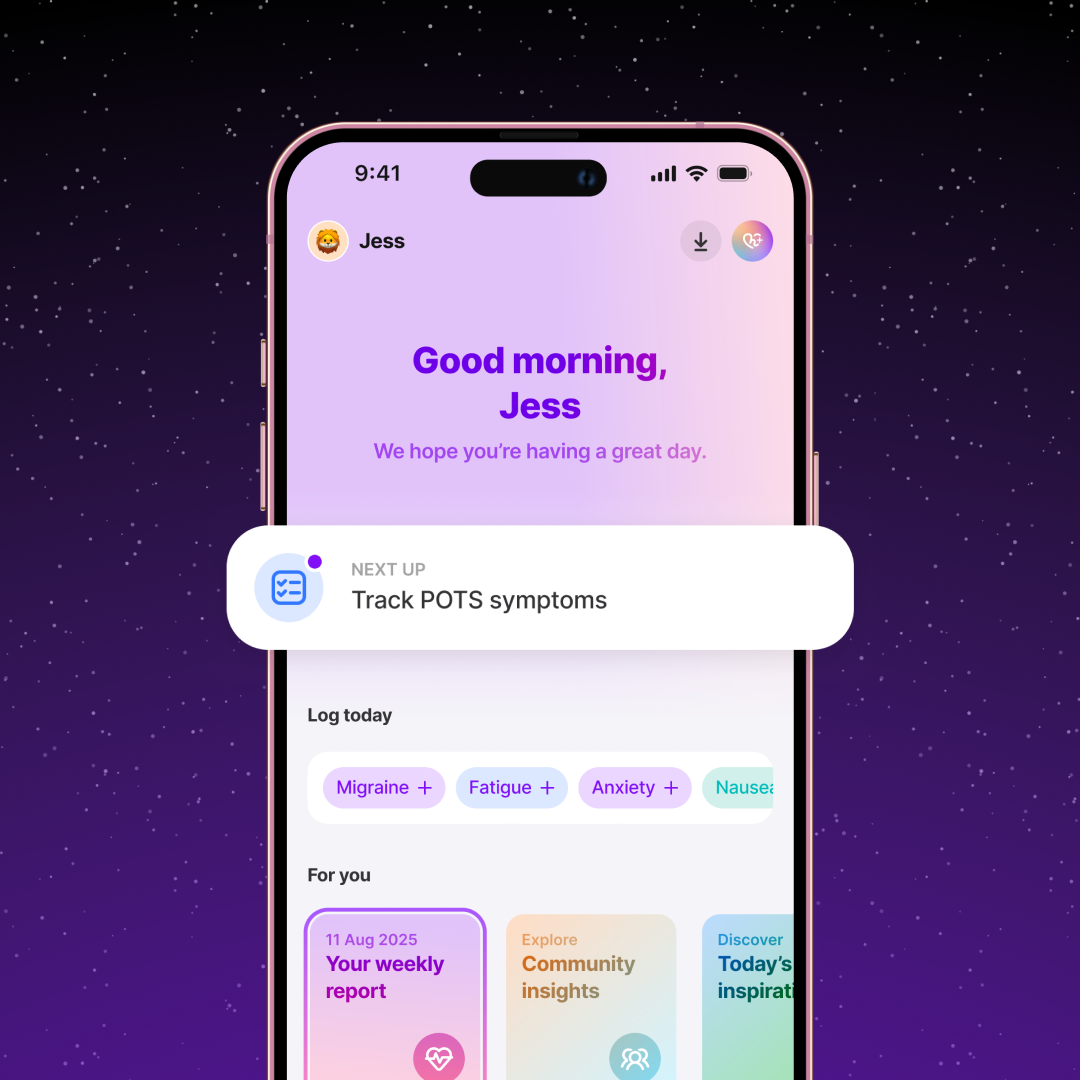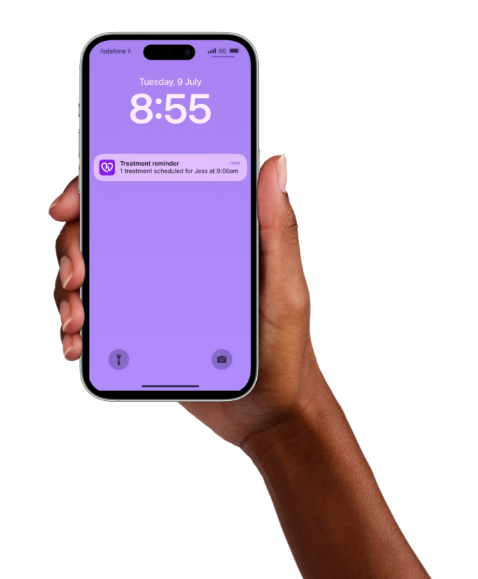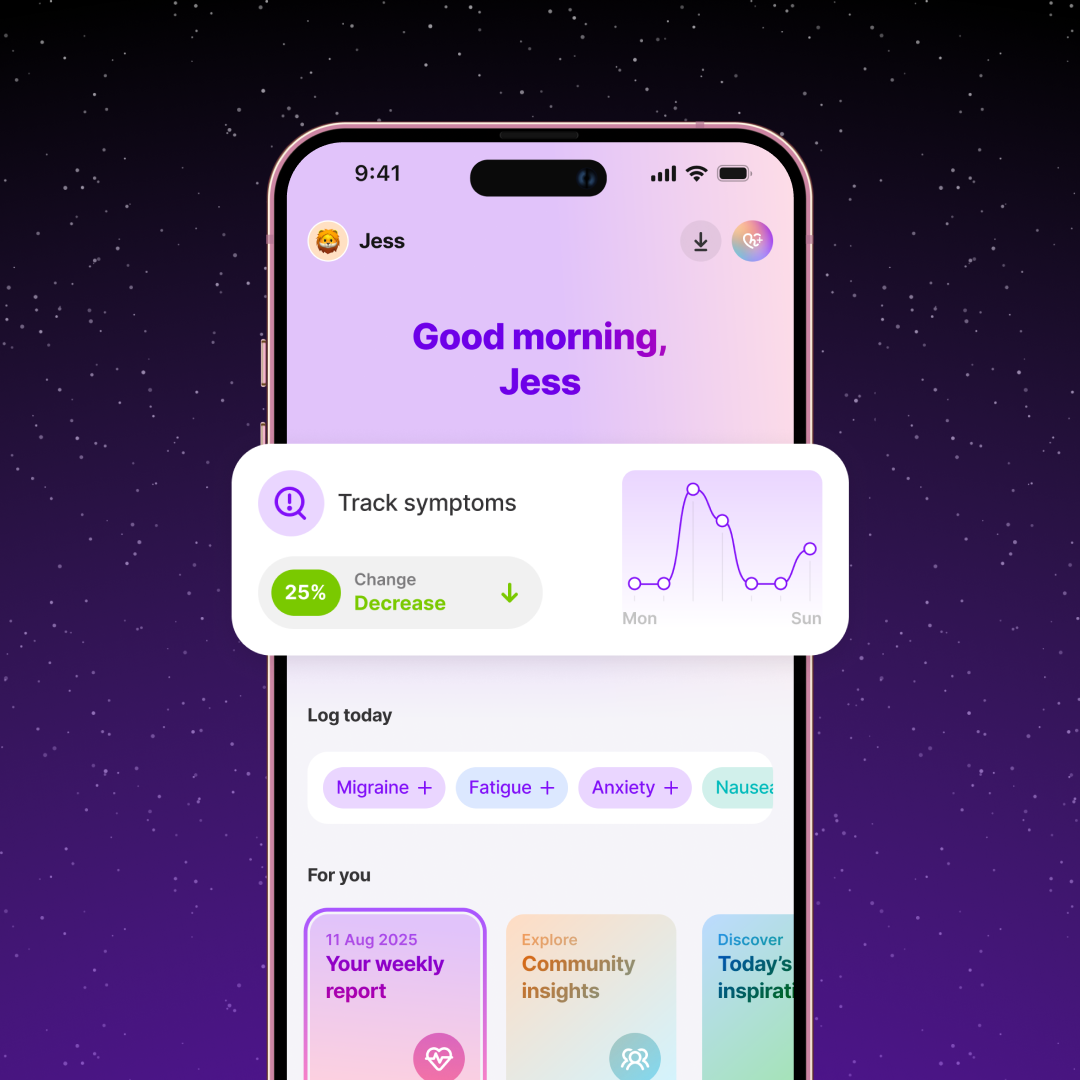POTS and Seizures: Connection, Symptoms & Management Guide
October 12, 2025

- POTS usually doesn’t cause epileptic seizures. Some people faint from sudden blood-flow changes, and those episodes can sometimes look like seizures.
- Seizures don’t create POTS, but recovery after a seizure may temporarily make POTS symptoms (like dizziness or fatigue) feel worse.
- You can have both conditions. Seeing both a cardiologist (for POTS) and a neurologist (for seizures) can be helpful in sorting out overlapping symptoms.
- Tracking matters. Keeping a daily log of triggers (such as heat, dehydration, or long periods standing) can help you and your healthcare team spot patterns and improve care.
Disclaimer: Human Health is a health tracking platform and does not provide medical advice, diagnosis, or treatment. The information on this site is intended to support, not replace, conversations with qualified healthcare professionals.
Sudden dizziness, fainting, or jerky movements can be frightening, especially when you don’t know if it’s a seizure or something linked to POTS (postural orthostatic tachycardia syndrome). That uncertainty can make each episode more stressful than the symptoms themselves.
While POTS rarely causes true epileptic seizures, fainting episodes sometimes look seizure-like, and some people live with both conditions.
In this guide, we’ll walk through how the two can overlap, what signs and triggers people often notice, and how tracking your experiences can help you and your healthcare team make sense of what’s happening.
POTS and seizures: What to know
POTS is a condition where the heart rate rises much more than usual when moving from lying down to standing. This happens because the body’s automatic regulation of blood flow doesn’t work as smoothly as it should. Seizures, on the other hand, are sudden bursts of unusual brain activity. The two are very different conditions, but their symptoms can sometimes look similar, especially during fainting spells.

Can POTS cause seizures?
POTS itself does not usually cause epileptic seizures. However, fainting episodes related to POTS can sometimes include seizure-like convulsions or jerky movements. As shown in case reports, patients with POTS may be misdiagnosed with epilepsy even though their EEG and neurological workup remain normal.
Can seizures cause POTS?
Seizures themselves are not considered a cause of POTS.. Some people live with both conditions, but POTS is understood as a disorder of the body’s automatic systems that control things like heart rate and blood pressure. It is not considered a complication of seizures.
Can you have both at the same time?
Yes. Some people live with both POTS and a seizure disorder, but the two conditions remain separate. A thorough evaluation by both a neurologist and a cardiologist is usually needed to confirm each diagnosis and guide treatment.
What’s the difference between a POTS episode and a seizure?
Sometimes a fainting spell from POTS (postuHuman Healthral orthostatic tachycardia syndrome) can look a lot like a seizure. Here are a few general patterns people and their clinicians often talk about:
- When it happens: POTS episodes often occur when standing, especially for long periods, or in hot environments.
- Early signs: People may notice light-headedness, nausea, or a racing heartbeat before fainting.
- During the episode: In POTS-related fainting (syncope), loss of consciousness is usually brief, with rapid recovery once the person lies flat.
- After the episode: Seizures may cause a prolonged recovery period, known as the post-ictal state, which includes confusion, drowsiness, or headache lasting more than 10 minutes.
- Movements: A faint may include brief stiffening or small jerks (myoclonus or tonic movements), but full-body convulsions and prolonged post-event confusion are more typical of seizures.
{{pro-tip-1}}
These patterns are not rules. Because fainting and seizures can overlap in appearance, it is important to share detailed notes about each episode with your healthcare provider to help guide testing and next steps.
Possible overlap between POTS and epilepsy
Some symptoms may appear in either condition, even though the causes are different. People sometimes report:
- Dizziness or light-headedness
- Brief shaking or jerky movements
- Altered awareness or feeling “out of it”
- Nausea or queasiness
- Headache or migraine before or after an episode
These experiences can vary widely from person to person and from episode to episode. Tracking each event (what you felt before, during, and after) can help you and your healthcare team understand your unique pattern.
Common triggers for both conditions
Some triggers can overlap for people living with POTS or seizures. Commonly reported ones include:
- Dehydration or skipping fluids
- Heat or hot showers
- Standing still for long periods
- Illness or fever
- Stress or emotional strain
- Poor or disrupted sleep
Triggers can be different for everyone. Keeping a daily log of your episodes and what came before them can help reveal your personal patterns and guide future conversations with your healthcare team.
How to manage POTS and seizures
There is no single plan that works for everyone. Care often involves ongoing conversations with your healthcare team and small adjustments over time. Here are some areas to consider bringing up:
Stay hydrated and ask about salt
Many people with POTS are advised to increase fluid intake and adjust their salt (sodium) intake. Always follow your clinician’s guidance before changing fluids or diet.
Add gentle movement and consider compression
Light activities (like short walks or use of a recumbent cycle) may help circulation, and compression garments are sometimes used.
{{pro-tip-2}}

Simple posture tricks and avoid overheating
Using physical counter maneuvers such as leg crossing, forward bending, or avoiding prolonged upright posture, and avoiding heat exposure, can help reduce symptoms for some people.
Review medicines and have a safety plan
Ask your healthcare provider to look at any medicines you take to see if they might affect heart rate or blood pressure. Having a simple plan with family or friends for what to do during an episode can also help you feel safer.
Track your symptoms and triggers
Writing down episodes, heart rate changes, or warning signs can reveal patterns over time.
{{inline-cta-1}}
Can seizure medications make my POTS worse?
Some people taking anti-seizure medicines report side effects like dizziness, fatigue, or changes in blood pressure. Experiences vary widely, so it’s important to talk with your healthcare provider if you notice new or worsening symptoms.
If you notice new or worsening POTS-like symptoms after starting or changing a seizure medication, let your healthcare provider know right away. They can review whether the medicine, dose, or timing needs adjusting, or if something else is causing the change.
Should I see a cardiologist or neurologist?
Because POTS and seizures involve different body systems, many people benefit from talking with both types of specialists:
- A cardiologist focuses on heart rate, blood pressure, and circulation, which are key in POTS.
- A neurologist looks at brain and nerve activity to check for seizure-related concerns.
Sometimes these specialists work together to piece together the full picture. Bringing a record of when episodes happen, what you felt before and after, and any possible triggers can help them better understand your experience and guide next steps.

Track all your symptoms & get insights inside the Human Health app
Living with both POTS and seizure-like episodes can leave you guessing about what happened, when, and why. The Human Health App helps reduce that uncertainty by giving you one place to track heart rate changes, fainting spells, seizure-like episodes, and possible triggers.
You can also log treatments or lifestyle changes alongside your symptoms, then export clear PDF summaries to share at your next appointment. That way, your healthcare team sees the same patterns you do.
Start today: With the Human Health app, you’re not just tracking. You are turning daily notes into practical insights that support clearer conversations and more confident care.
Disclaimer: Human Health is a health-tracking platform and does not provide medical advice, diagnosis, or treatment. The information in this article is for educational purposes only and is not a substitute for professional medical guidance. Always talk to a qualified healthcare provider about your symptoms and care plan.
References
- National Library of Medicine: Postural Orthostatic Tachycardia Syndrome
- National Library of Medicine: Misdiagnosed Seizure-Like Activity in a Patient With Postural Orthostatic Tachycardia Syndrome: A Case Report
- National Library of Medicine: Is postural orthostatic tachycardia syndrome (POTS) a central nervous system disorder?
- NHS: Postural tachycardia syndrome (PoTS)
- National Library of Medicine: Distinguishing Convulsive Syncope from Seizure induced by repetitive Transcranial Magnetic Stimulation (rTMS) - A Case Report
- International League Against Epilepsy: EPILEPSY IMITATORS
- National Library of Medicine: Chapter 1Clinical Aspects of the Diagnosis of Epileptic Seizures and Epileptic Syndromes
- Mayo Clinic: Epilepsy
- UVA School of Medicine: The POTS (Postural Tachycardia Syndrome) Epidemic: Hydration and Nutrition Issues
- Epilepsy Action: Seizure triggers
- National Institute of Neurological Disorders and Stroke: Epilepsy and Seizures
- Johns Hopkins Medicine: Postural Orthostatic Tachycardia Syndrome (POTS)
- National Library of Medicine: Effect of High Dietary Sodium Intake in Patients with Postural Tachycardia Syndrome
- National Library of Medicine: Exercise and Non-Pharmacological Treatment of POTS
- ScienceDirect: Compression Garment Reduces Orthostatic Tachycardia and Symptoms in Patients With Postural Orthostatic Tachycardia Syndrome
- National Library of Medicine: Cardiovascular Effects of Antiseizure Medications for Epilepsy
- National Library of Medicine: General side effects and challenges associated with anti-epilepsy medication: A review of related literature
This is a div block with a Webflow interaction that will be triggered when the heading is in the view.


Try it with the Human Health app
Log your daily symptoms, note possible triggers such as heat or stress, and share a PDF summary with your healthcare team to make each visit more informative.







Pro tip
Note the first warning signs you notice, such as dizziness, racing heartbeat, or confusion. Sharing those early details can help your healthcare team tell fainting and seizures apart more clearly.
Pro tip
When you log episodes, include any treatments or lifestyle changes you are trying at the same time. Over weeks or months, this helps show what may be making symptoms better or worse.

.jpg)




.png)

